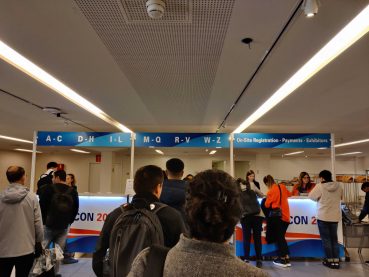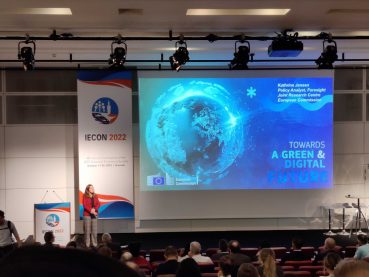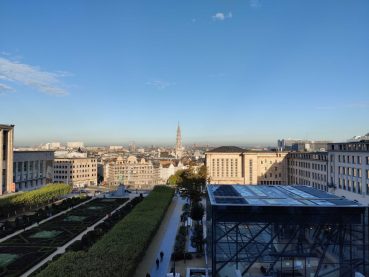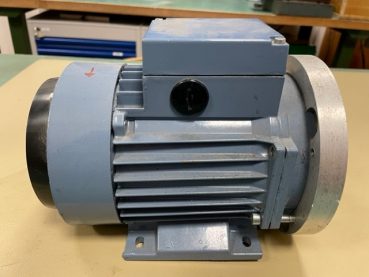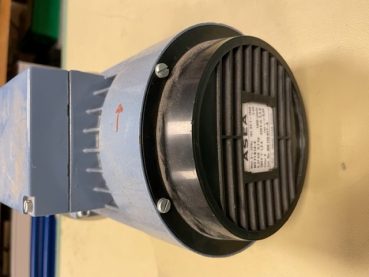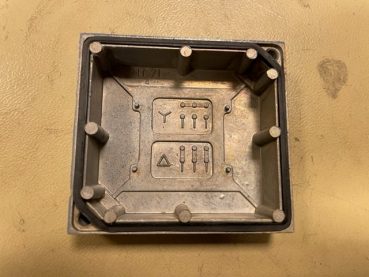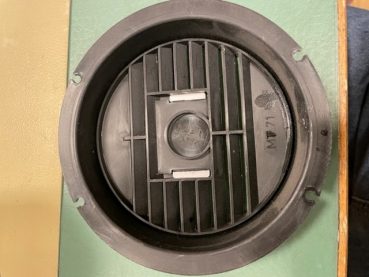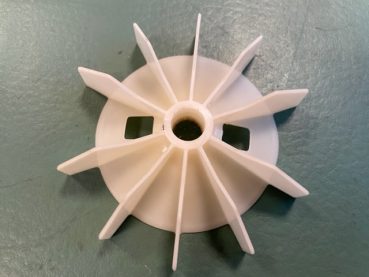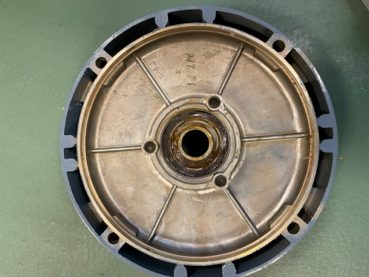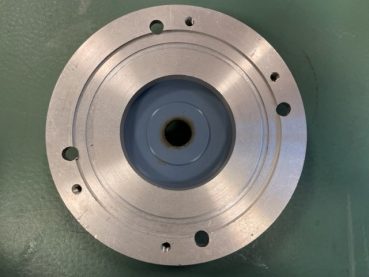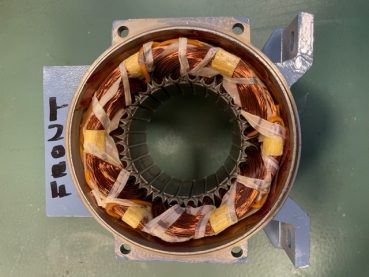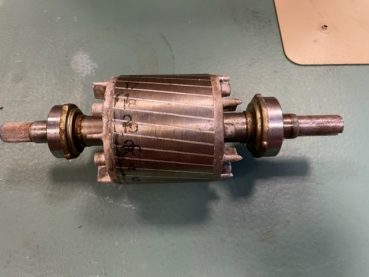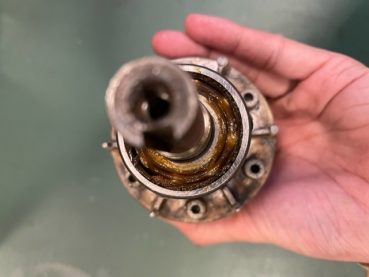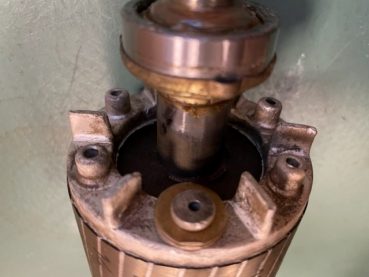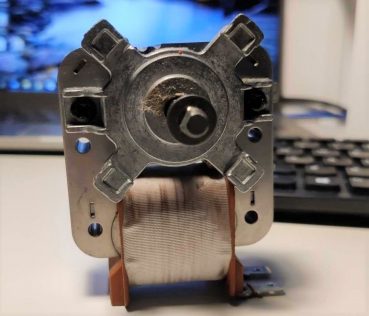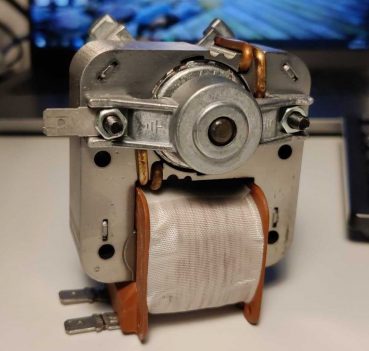Holidays greetings – time to lay down the weapons

Another year is going to the archives. As it usually happens, the final rush to close any open issue (or to push it to someone else on the very last day so as to clean your table, but not the others) is ongoing. It takes the life out of people.
But hey, the last days before the Christmas and New Year holidays are also a time of reflection. What has gone well and what has gone bad this year?
I start with the bad things – so we can conclude in a crescendo with hopes for the future.
Bad thing 1 – no Italian food from Santa this year
One thing really hurt me: I did not manage to make a delivery from Italy happen before this holiday season. It was supposed to be a small Christmas present for everyone on the team, something to eat (of course). It all went to the trash. Why? Because of the KTH Innovation incubator for spin-offs!
Let me explain. I ordered a package on Amazon.it to be delivered here at our laboratory address. It has worked last year, so I was pretty convinced that there would have been no troubles this year either. Amazon updated me that the packages were two instead of one because one of the items was located somewhere else, but ok. Both packages were sent without problems, according to the given time schedule, with some days of difference in between.
I was eagerly waiting without saying anything to the rest of the team, hoping for a surprise. I did not receive any information from Amazon so I supposed that everything was fine, until an SMS came to me on Sunday, two weeks ago: “Your delivery was attempted several times but no one received it. The delivery is canceled”.
I jumped on Amazon.it and saw that indeed, a delivery attempt was made, by a rather-known local delivery company that Amazon is using in Sweden. This company is actually a spin-off from KTH and has its roots in the KTH Innovation offices. I will not mention it directly but you can guess :-).
The attempt was made on Saturday for the first time, and on Sunday for the second time, with obviously no success because no one was in the office building. So the delivery company decided to send back the package to Amazon. This was the first of the two packages, and luckily the smallest of the two.
On Monday I called the company and explained that they should deliver during normal working hours. They said, OK! And ten days later, I receive a notification from Amazon that the second package is on its way back to Amazon, and the delivery is canceled. Not even an SMS. Looking at the tracking of the package, it looks as if the second package was sent back and forth within the delivery company, with an attempted delivery on Saturday afternoon. I called the company and they explained that they lost the package that was supposed to be delivered during working hours, then they found it again, and scheduled it for a Saturday delivery. And that they cannot do anything about it now because it has reached Amazon in its return path.
Apart from the anger and the sadness, I am amazed at the level of unprofessionalism. I will fix this issue in January, hopefully by relying on some other delivery company that has no KTH connections.
Bad thing 2 – funding agencies, we do exist you know?
Oh well, of course, we are always struggling to get funding for our research activities. That is not something new for anyone working in academia, so it happens, again and again, that our financial applications are rejected. Sometimes they go through the process and we secure new people, so it is not bad all the way. But when it goes bad, often you remain with the feeling that your application has not even been read by anyone. That does not really give trust in the process. But again, we are stronger than that. We will survive it.
Bad thing 3 – our newest hardware enemy, the TI Piccolo F28069 evaluation board
Sometimes you want to be innovative, and things fire back. We had the original idea to use this evaluation board in a setup with a small six-phase induction machine, for working on the diagnostics of electric machines. The attractiveness of the board came from the fact that you can essentially program it through Matlab/Simulink in a very rapid way, at a pretty low cost. All of this would be true if only the board would respond in a deterministic way to our programming attempt. But it is not… and the debugging of it is equivalent to finding the Holy Grail.
The behavior is simply impossible to debug, signals are either not reaching the board or not coming back to the host computer, and the interrupt-based routines we need for our work are not supplying the inverters with the correct pulse-width modulated signals. Even the pre-made examples in Matlab/Simulink do not work. All of this is making Gustaf very upset and sad. And Gustaf is the nicest guy I know. If you managed to make him upset, you have gone a looooong way…
I will personally trash the board when we are done with the work we are supposed to do. With no mercy.
A little update: Gustaf seems to have found something of interest that could make things work… let us not celebrate too early, but I am ready with the axe to destroy the whole bench to conclude our experience with it.
Good thing 1 – a new Knight and a new Dame of the realm
Let us move to the good things, then!
We had two newly nominated Knight and Dame of the realm, respectively in June and November this year 2022 (for details on the meaning of the noble title, please refer to the previous post “The noble life of the academic“, 2021-12-23).
Giovanni was nominated Knight of Condition Monitoring in June, with a dissertation on the predictive maintenance of motor drive systems. He demonstrated that it is possible to determine the aging of the stator winding insulation (one of the major causes of faults in electric machines) in a real-time fashion, by analyzing parasitic oscillations of the phase currents that originate from the pulse-width-modulated nature of the voltage supplied by a frequency converter. Three journal papers out of that, an experimental setup working as a clock, and a massive amount of gathered data.
I am personally very happy to see Giovanni become a Knight for several reasons. The first is, Giovanni and I know each other for a long time and have been working together since 2011 at ABB. He moved to KTH in November 2016 to pursue a Knight title, while I still was working at ABB. He thought he got rid of me. Unfortunately for him, I became Viscount at KTH in 2018. The moment I was in, I became again his supervisor. I imagined he cried all night when he learned that. Now he managed to get rid of me again, but I do not have the strength to follow him. He will have to do it without me – which means, he will become a successful CEO of some company soon.
The second reason is that Giovanni fulfilled one dream of mine, which is to destroy an electric machine, finally. Some of you may have read my biography and understood that I have five blown-up converters in my career. It is the highest and the lowest point of my career at the same time. But I never managed to kill a machine. Giovanni did that for me: he was supposed to accelerate the aging of an induction machine to fit the goals of the project within the Ph.D. times. He subjected two prototypes to the worst overheating and overload conditions, with me on the side, blood in the mouth, and drooling saliva, inciting for more. When he killed a prototype after six weeks of continuous electromagnetic and thermal stress (while gathering all the important data he needed), I felt a sense of accomplishment. Thank you Giovanni for quieting my thirst for destruction.
Last November, Konstantina became a Dame of Finite-Element Simulations of the realm, too. I have not been involved in Konstantina’s project that was established before my arrival at KTH, and had as the main supervisor our former colleague Oskar that has unfortunately left us. Sjoerd helped during the last part of the project. I have seen the struggle in the finite-element simulations of the variable phase-pole induction machine we are dealing with in other projects and the optimization of an axial-flux induction machine based on the same variable phase-pole principle. I hope we can continue working towards this design direction, in the future, because we need to know more about it. But we all thank Konstantina for her time at KTH, where the brutality of men at work was softened by a female presence that quieted our behavior.
Good thing 2 – becoming Count of the realm
The academic career path in Sweden has a middle stage between Viscount and Marquess that must be achieved for several reasons – one of which is that you cannot formally be the main supervisor of a Ph.D. student without this title (informally, you can… but formalities are all when it comes to career progression).
The title is achieved by following pedagogical courses and by demonstrating to be part of a supervision team (as co-supervisor) of a Ph.D. project from inception to the end. I managed to spread the courses and fit them in my calendar over the years and I must thank the pandemics to have made it possible to follow courses remotely (yes it helped my calendar a lot!). The second requirement was achieved with Giovanni’s project, another thing that I must thank him for.
So now you can call me The Right Honourable Luca Peretti, Count of Electrical Machines and Drives, Lord of Multiphase Drives, Knight of the Order of Parameter Estimation. Remember it in your email conversations with me!
Good thing 3 – the massive scientific advancements of the Ph.D. students
Ph.D. projects are always very non-linear in their advancements – sometimes nothing comes out of the pipe, some other times it is like opening the water taps. This year we are flooding the floor with water.
Gustaf, Yixuan, Omer, and Mesfin have done such an excellent job with our variable phase-pole induction machine, that I could basically tell them to stop working on new scientific challenges, focus on the publications of what they have on hand, and finish their Ph.D. work earlier than the due time.
Just to mention a couple of highlights: Gustaf and Yixuan finally managed to publish the cornerstone paper of the whole theory and experimental work we are doing on the variable phase-pole machine, demonstrating that the previous literature statements (“it is not possible to control a variable phase-pole machine during the pole transition…”) are not true. It is a matter of modeling – choose the right one and you will be able to do that. Stick with the standard models, and you will NOT be able to do that. I remember that I fed both Gustaf and Yixuan the very initial rudimental idea of the unified modeling we use today, back in January 2020. These two guys run like squirrels in a squirrel cage (pun intended) to develop the whole theory with solid mathematical bases, build up the experimental setup (just a 36-leg converter connected to a machine with 36 independent currents, with DSP+FPGA control of all currents and speed), test successfully the theory while repairing, again and again, the hardware faults, and publishing a paper on the IEEE Industrial Electronics transactions in 2.5 years. They need an honorary Knight title already now. The road is downwards for both from now on, and Gustaf, despite the Piccolo F28069 board (see “Bad thing 3” earlier up), you will make it easily and successfully – your growth goes beyond the struggles.
Omer, on the other hand, decided to make an even more stunning bench of the same type working at ABB. I am impressed by its robustness and flexibility, as well am very happy to see that you can use standard ABB drives (with overridden control, though) to control the variable phase-pole machine. Did you know that the machine on that bench was manufactured in 2017/2018 while I was at ABB? It was my last effort together with Ingo (or beloved lab technician at ABB) before leaving the company. I always dreamed to use that machine again, and luckily you appeared in 2020 as a doctoral student. I know it is in good hands now.
Mesfin has also fought his way through the traps in COMSOL to produce a work that is currently under revision as an IEEE transaction paper. What is very special about Mesfin’s work is that he is 50% deployed at KTH and 50% deployed at the University of Addis Ababa, in Ethiopia, making the planning and execution of the work quite a challenge. But you are making it, and we will help you with your last stay at KTH next year. You will soon see the light at the end of the tunnel.
Good thing 4 – we are sailing
For a while, it has been a little dream of mine to work on electric boats. The occasion came and I grabbed it – we must thank in first place Ivan Stenius for his leading role in the hydrofoil boat projects at KTH, as well as Nicholas Honeth to provide a strong link between the electrical and the mechanical world of this application.
We managed to gather resources for a postdoctoral researcher working in the field of electric machine design for electric boat applications. And we also found an excellent and willing candidate in Zhaokai, who recently joined our team in November. I hope we will create all the opportunities you deserve here at KTH, and I think we are already on a good path.
Good thing 5 – new recruitments coming in
Despite the many struggles – see “Bad thing 2” before – we managed to secure 3 new Ph.D. positions for next year, with a fourth that could easily be a shared project with another team in the department. We should be pretty satisfied with that. The recruitment process and their integration in the department will require some time and effort from me and Mats, but I am positive that we will find excellent candidates with lots of passion and willingness to do good. I am looking forward to the candidates’ selection!
We are also still waiting a positive response for the Swedish Immigration Offfice in relation to another postdoctoral research position that we filled in last autumn. More on that when the person will be in place, here with us!
And let us not forget our guest researchers, present and past.
Xinpo, you started with us in November and will stay one year during your Ph.D. studies at Harbin Institute of Technology. I am looking forward to applying your control knowledge in our variable phase-pole machine – we need a pair of fresh eyes there!
Akbar and Dario, it was a pleasure to have you here during 2022. There are things that we need to complete together to achieve the target of joint publications, but we will get there soon. I hope you found the KTH period as formative and useful as it was for us. Personally, any time someone brings in new ways of thinking and new experiences, I find that the EMD team has become a little bit wiser and richer.
Good thing 6 – our teaching and our ambassador students
It is no news for those that work with me: I put significant efforts into developing courses for our master students at KTH. For someone, like me for example, teaching is fun, but there are other important reasons.
One is that I strongly believe in good teaching as a way to improve the competitiveness and long-term well-being of the industrial scenario around us. We are lucky to have many large companies in Sweden that are heavily involved in the electrification of different sectors, and that are looking for well-trained engineers. We try to provide them with what they need, but it is still way too few with respect to the demand. We should produce more electrical engineers.
How to reach that? Well, we can do as many campaigns as we want. But if the teaching is not up to standards, we will always fall short. That is why it is of the utmost importance to have courses with modern content, using modern learning methods, and open to continuous developments to incorporate the latest findings of the research. The students going through our education will also be de-facto ambassadors of our methods and beliefs, once out there in the industry. Better showing the best of us while they are at KTH.
By the way, I find the course development an excellent occasion to put myself in front of the mirror and ask myself: did I really master this topic that I want to teach? Is it relevant for the future? Do I need to know more about it to be able to transfer it to the students?
My father always said: if you want to teach one thing, you need to know at least three things more. I agree completely, now that I am in the middle of it.
I think that we are having reasonably good success with our teaching, looking at the number of students with the role of Gentleman/Maid or Esquire/Madame (see again the previous post “The noble life of the academic“, 2021-12-23) that we supervise every year. Next year will be no exception.
But I am looking for other challenges coming down the line:
- The course of Electrical Machines and Drives needs its own book. I have started working on that, together with my former supervisor in Italy. It will take years, I know. But it must be done.
- The course of Design of Electrical Machines needs to be re-established as a key one in the master program of electrical engineering. This course was Oskar’s and he was doing very well with it. It came under Mats and mine responsibility when Oskar, unfortunately, left us. We have managed it at a minimum, also because it runs in parallel with our other courses. But the situation will change next year, when the course will be moved to another semester, away from our other teaching duties. I am planning a good revision and alignment of its content. It will resuscitate again!
- The course of Control of Electrical Energy Conversion is changing teachers too. From next year, Xiongfei and I will be teaching this course. Its content has a lot of drive control for electric machines, and I am looking forward the collaboration with Xiongfei to establish it as a cornerstone course where students can acquire the principles of controlling a machine-connected and a grid-connected converter at once. After all, the theory is all the same, with some small changes!
Stop writing in this post
Yes I know, I went too far with the information contained in this post. I may have forgotten something actually. Sorry for that. Anyway, take it just as a reflection of our genuine efforts and strive for achieving, and offering, the best research and education in electric machines and drives.
The EMD team deserves a vacation now, and despite being without Italian food (see bad thing 1 earlier in this post), I hope you will find peace and serenity during this holiday season. Lay down your weapons, go home and rest before the battle commences again in January.
Merry Christmas and Happy New Year to everyone, EMD team members and not.


